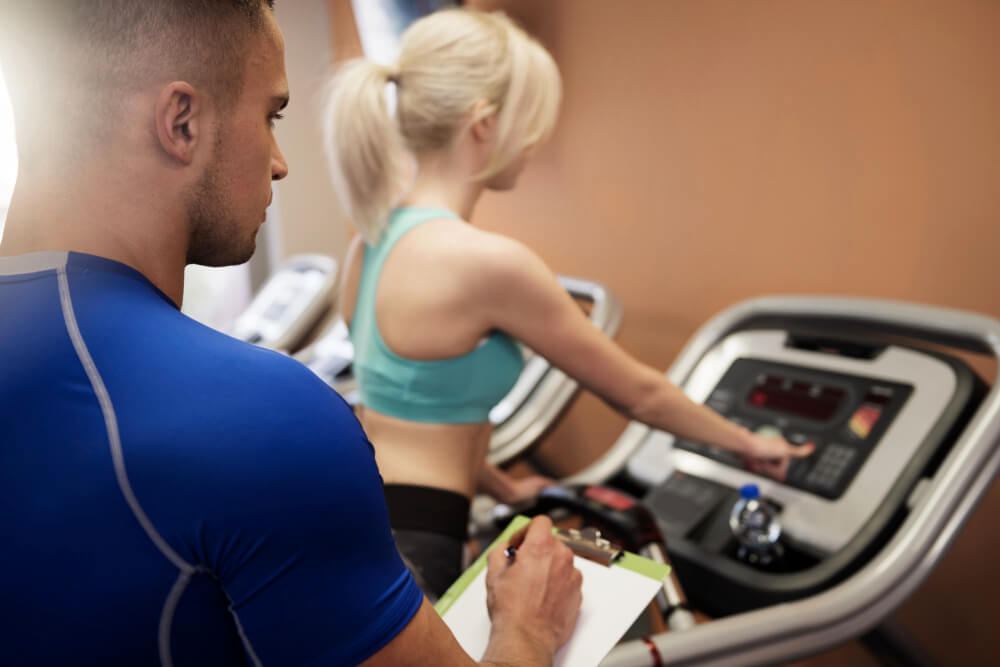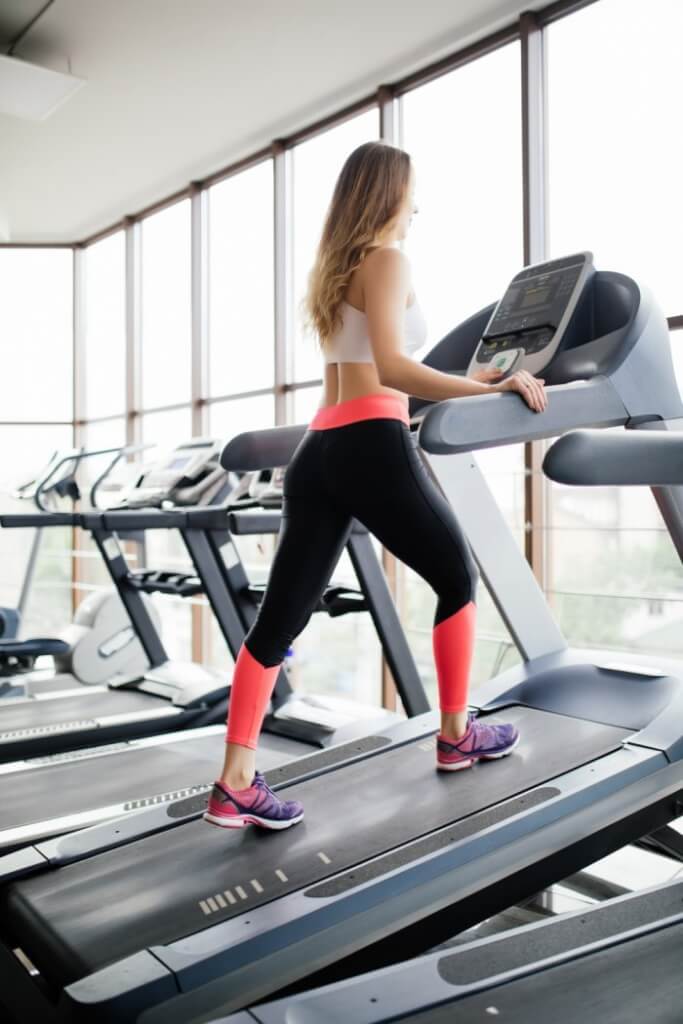Why Every Runner Should Do Uphills on a Treadmill

I am a flatlander. Living in Northeastern Wisconsin, there are almost zero hills where I live. On the one hand, this makes things very pleasant when I am running. On the other hand, when I go to a race where there is varied terrain – I used to struggle.
In order to make sure this did not happen to me again, I added some hill repeats to my workout regiment. But what if you don’t have a nice big hill near you on which to do repeats? Or what if you are looking for gently rolling hills, to replicate a racecourse?
That is where the incline button on your treadmill can really come in handy as there are some real benefits of running incline on your treadmill.
Benefits Of An Incline Treadmill Workout
- Heart Rate: Your heart rate will elevate higher due to the additional incline.
- Posterior Chain Benefits: Incline running also engages your posterior chain muscles in a way that flat running does not. This muscle group includes your hamstrings and glutes are fired up in a way that you don’t get from a flat surface.
- Other Muscles: There are also benefits to your calves and shins.
- Calorie Burn: These workouts torch your fat and calorie burning. Your body will start to burn like never before!
How Do Most Treadmill Incline Intervals Increase?
Most treadmills have a button that allows you to add incline by .5%. Treadmills can go as high as 10 or 15% incline. What exactly does the incline mean?
The treadmill grade is a measure of the distance you have raised the treadmill (height) for every 100 horizontal distance. As your numbers go up on the incline, so does the front of your treadmill. Using the incline allows you to replicate a hill run.
What Incline Is Best On A Treadmill?
There is not really a “best.” It depends a lot on what your goals and objectives are. I am a firm believer in incorporating some incline into your workout, even if it means you have to walk some. As you can see, there are serious benefits and your body will thank you for doing some treadmill incline workouts.
Ask yourself what you are trying to do. One workout my coach used to give to me was hill repeats. I was to find a hill I could run to in 2-3 miles, do 6-10 repeats up the hill, then run home. He wanted me to be able to run up the hill in roughly 60 seconds.

When I did these repeats on the treadmill, I wanted to find the incline that I could do repeatedly for :60 seconds at a certain set speed on the treadmill. Instead of getting faster, I increased the incline as the intervals got easier.
If you are looking for more rolling hills, you might decide to vary the incline between 1.0 and 3.0, for differing lengths of time. It also matters if you are running or walking. Some inclines that you can handle walking might feel impossible if you try to run for any distance!
Should You Go For Steady Or Varied Incline?
One question I am often asked by runners is if they should run at a steady pace at one set incline, or if they should change up the incline during a run. Great question!
If you set your treadmill for a small incline, such as somewhere from .5 to 2.0, you will reap the benefits of that additional work you are putting on your body. However, doing the same of anything over and over gets you different benefits than if you change up what you are doing.
Some treadmills have a fancy setting where you can actually replicate the course of a racecourse. What that means is you program in the race you want to do, and it has the incline ebb and flow with how the course would be. Sometimes there is actually a video that goes along with this so that the runner is actually experiencing the sites of the course.
Not all of us have this type of technology at our disposal. I like to use Nike Running App or Peloton App treadmill workouts to help me decide how to vary my training. The app might tell me it is time to take it to 3% incline for :90 seconds of hard effort, then demand :60 seconds of walking at .5.
There are many positives of doing workouts that mix up the incline and speed. One is that you are more likely to replicate what you might find on a course. Second, this mimics a HIIT workout you might find.
Doing your thing at different paces and inclines tricks your body into jumping into higher fat-burning mode.
What Is Better on A Treadmill: Incline Or Speed?
Excellent question if you are asking yourself which is better for you to do, increase your incline or increase your speed. I would answer, “both.” And I don’t mean both at the same time. I firmly believe that you need both incline and speed in your workouts in order to grow to your potential.
There is no doubt that increasing your speed with some speed work intervals will help you get faster. Those bursts of speed are necessary if you want to see the numbers on your times go down.

Bursts of speed can be short, such as :15 seconds, or longer. If you are working on pure speed, you will likely get a long amount of recovery between efforts. If you are hoping to increase endurance, you may get less time to recover so you are still not completely recovered before the next run.
Incline running builds strength and also increases your calories burned. However, it can also help make you faster. If you are running for periods of time at an incline then race on a flat course, that flat course will feel easier to you.
What Treadmill Incline Is Equivalent To Running Outside?
If you are trying to replicate outdoor running or walking, you actually should have a slight incline to make up for the fact that the track helps propel you along. Most people advocate for a .5 or 1.0 incline if trying to run a “flat road.”
Some people expend less energy running on a treadmill than outside for this reason. Outside running has an “energetic cost” that indoor treadmill running does not have.
Can You Get Too Much Of A Good Thing?
I do feel the need to warn you that yes, you can get too much of a good thing. Sometimes runners and exercise enthusiasts fall into a trap of thinking that every workout has to be all out. That is simply not true.
Sure, speed is good for you. Inclines are good for you. However, you do need to be sure you have balance. You also need to have some flat, easy running in your workout week. That balance gives your legs time to bounce back. In addition, varying your pace is proven to help you grow as a runner.
Latest Articles
 Is Running on a Treadmill Easier Than Running Outside?Runners have their own preferences, whether it is treadmill running, running outside on the road, or exploring trails. So...
Is Running on a Treadmill Easier Than Running Outside?Runners have their own preferences, whether it is treadmill running, running outside on the road, or exploring trails. So... Is It OK to Use Trail Running Shoes on the Road?While trail running shoes can be used on roads, especially in situations where a runner encounters mixed terrains or pref...
Is It OK to Use Trail Running Shoes on the Road?While trail running shoes can be used on roads, especially in situations where a runner encounters mixed terrains or pref... How to Fix Sore Quads After Running?Rest, ice, gentle stretching, and over-the-counter pain relievers can help soothe sore quads after running. Also, ensure ...
How to Fix Sore Quads After Running?Rest, ice, gentle stretching, and over-the-counter pain relievers can help soothe sore quads after running. Also, ensure ... 10 Fruits With The Most Electrolytes to Replace Sports DrinksThese fruits are high in electrolytes such as potassium, magnesium, and calcium, essential for hydration, muscle function...
10 Fruits With The Most Electrolytes to Replace Sports DrinksThese fruits are high in electrolytes such as potassium, magnesium, and calcium, essential for hydration, muscle function...

